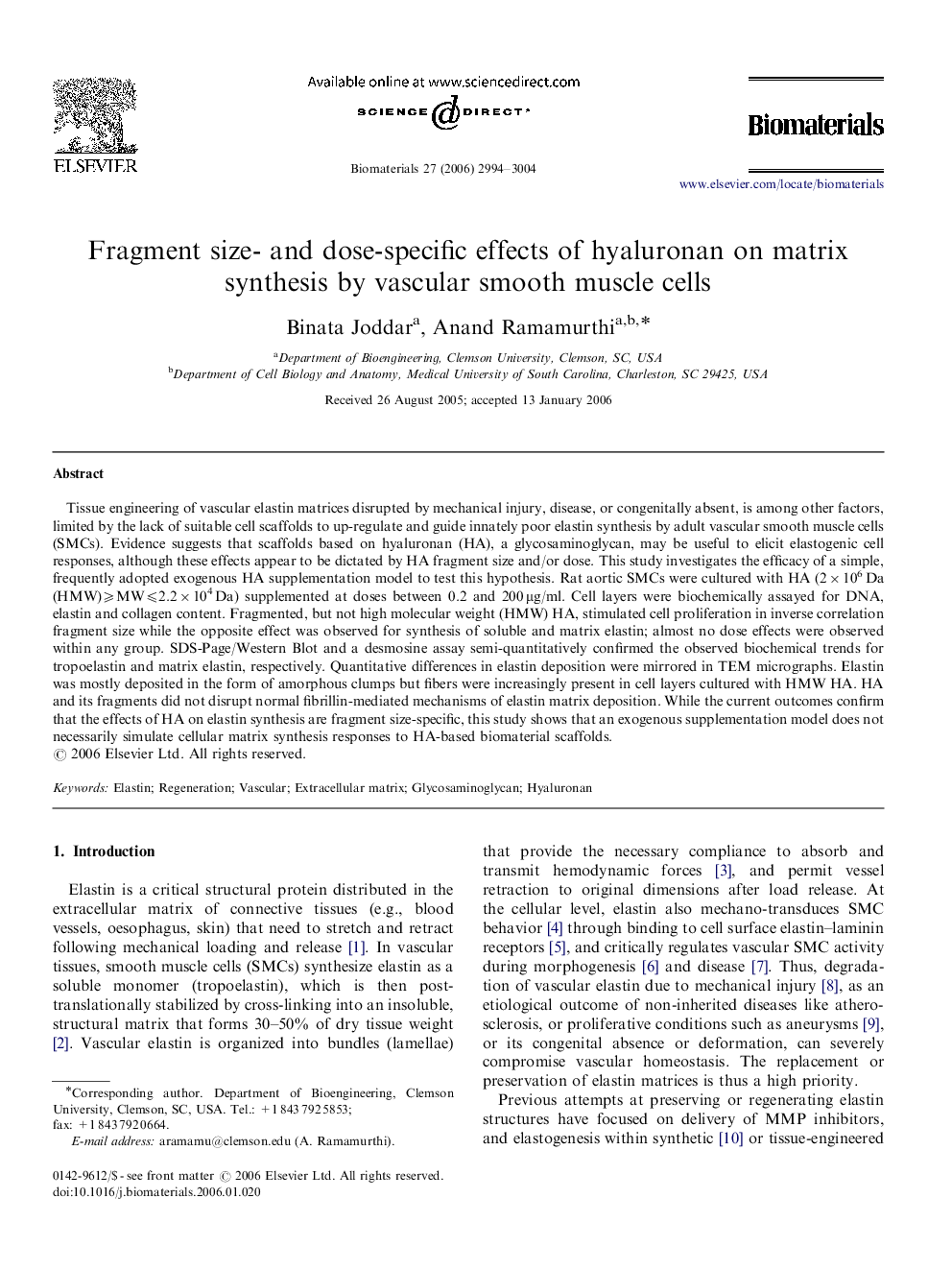| Article ID | Journal | Published Year | Pages | File Type |
|---|---|---|---|---|
| 11739 | Biomaterials | 2006 | 11 Pages |
Tissue engineering of vascular elastin matrices disrupted by mechanical injury, disease, or congenitally absent, is among other factors, limited by the lack of suitable cell scaffolds to up-regulate and guide innately poor elastin synthesis by adult vascular smooth muscle cells (SMCs). Evidence suggests that scaffolds based on hyaluronan (HA), a glycosaminoglycan, may be useful to elicit elastogenic cell responses, although these effects appear to be dictated by HA fragment size and/or dose. This study investigates the efficacy of a simple, frequently adopted exogenous HA supplementation model to test this hypothesis. Rat aortic SMCs were cultured with HA (2×106 Da (HMW)⩾MW⩽2.2×104 Da) supplemented at doses between 0.2 and 200 μg/ml. Cell layers were biochemically assayed for DNA, elastin and collagen content. Fragmented, but not high molecular weight (HMW) HA, stimulated cell proliferation in inverse correlation fragment size while the opposite effect was observed for synthesis of soluble and matrix elastin; almost no dose effects were observed within any group. SDS-Page/Western Blot and a desmosine assay semi-quantitatively confirmed the observed biochemical trends for tropoelastin and matrix elastin, respectively. Quantitative differences in elastin deposition were mirrored in TEM micrographs. Elastin was mostly deposited in the form of amorphous clumps but fibers were increasingly present in cell layers cultured with HMW HA. HA and its fragments did not disrupt normal fibrillin-mediated mechanisms of elastin matrix deposition. While the current outcomes confirm that the effects of HA on elastin synthesis are fragment size-specific, this study shows that an exogenous supplementation model does not necessarily simulate cellular matrix synthesis responses to HA-based biomaterial scaffolds.
